Our Engineering and Environment Group has been busy with a workshop and training course at the University of Manchester. The course, which was run by Charles Moulinec and colleagues from SCD in collaboration with the Universities of Manchester and 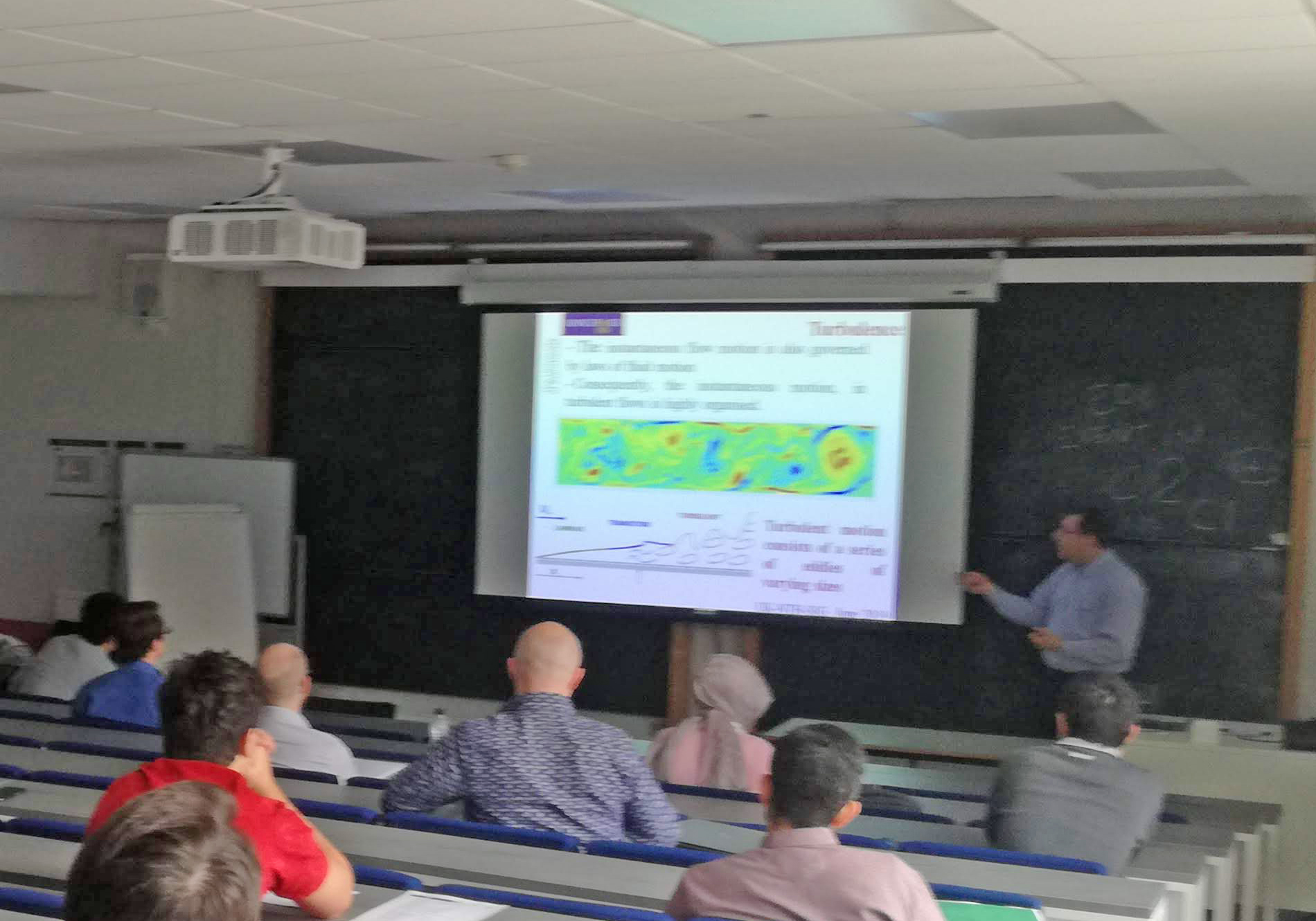 Sheffield, EDF Energy and EPCC, provided an introduction to the open-source Computational Fluid Dynamics (CFD) solver Code_Saturne. It was organised through the UK Fluids Nuclear Thermal Hydraulics Special Interest Group and PRACE (Partnership for Advanced Computing in Europe).
Sheffield, EDF Energy and EPCC, provided an introduction to the open-source Computational Fluid Dynamics (CFD) solver Code_Saturne. It was organised through the UK Fluids Nuclear Thermal Hydraulics Special Interest Group and PRACE (Partnership for Advanced Computing in Europe).
In a nuclear power plant, the prediction of fluid flow and heat transfer is of vital importance for the plant's performance and for safety compliance. This course focused on the use of CFD for the prediction of fluid flow and heat transfer, including turbulence modelling, near wall modelling and conjugate heat transfer.
Charles Moulinec, who also led some of the training, said," Through PRACE we were able to give participants access to the ARCHER supercomputer. We ran simulations to get them used to the Code_Saturne software, demonstrate how much faster they can get results using HPC, and also show that high-fidelity turbulence modelling is now becoming affordable."
Using ARCHER, the UK's national HPC facility, they can run a simulation overnight that would take 24 days using a single processor, making savings on both time and cost.
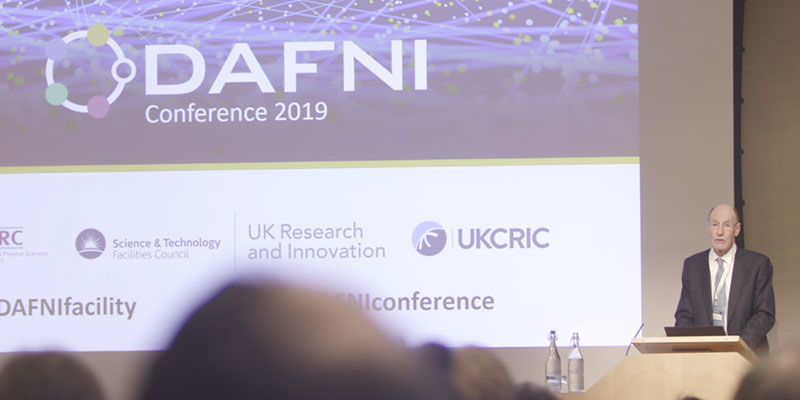 The DAFNI team (Data and Analytics for National Infrastructure) delivered a very successful inaugural conference at the Royal Society in London in June, with a mix of speakers from industry, academia and research funders. Speaking at the conference, Sir John Armitt, Chair of the UK National Infrastructure Commission (NIC), said, "Data is now as important to UK infrastructure as concrete or steel. Merely collecting data alone will not improve the nation's infrastructure. Neither will 'running the numbers' in the way we've always done. The key is not just the quality of the data we collect, but how we process it and, finally, how we use it." The NIC has now asked DAFNI to support its Resiliency Study.
The DAFNI team (Data and Analytics for National Infrastructure) delivered a very successful inaugural conference at the Royal Society in London in June, with a mix of speakers from industry, academia and research funders. Speaking at the conference, Sir John Armitt, Chair of the UK National Infrastructure Commission (NIC), said, "Data is now as important to UK infrastructure as concrete or steel. Merely collecting data alone will not improve the nation's infrastructure. Neither will 'running the numbers' in the way we've always done. The key is not just the quality of the data we collect, but how we process it and, finally, how we use it." The NIC has now asked DAFNI to support its Resiliency Study.
 Also in June, SCD and the Hartree Centre took a joint exhibition booth at ISC2019, Europe's largest Supercomputing Conference, which is held each year in Frankfurt. Cristina Del Cano Novales (Research Infrastructure Group) presented a poster about the JASMIN super-data-cluster, both for the Conference poster session and the Women in HPC session; Catherine Jones (Software Engineering Group) proposed and organised a session on “Software Engineering and Reuse in Computational Science and Engineering", and staff attended many of the technical sessions and workshops.
Also in June, SCD and the Hartree Centre took a joint exhibition booth at ISC2019, Europe's largest Supercomputing Conference, which is held each year in Frankfurt. Cristina Del Cano Novales (Research Infrastructure Group) presented a poster about the JASMIN super-data-cluster, both for the Conference poster session and the Women in HPC session; Catherine Jones (Software Engineering Group) proposed and organised a session on “Software Engineering and Reuse in Computational Science and Engineering", and staff attended many of the technical sessions and workshops.
Collaborative Computational Project No. 4 (CCP4) which creates, develops and supports cutting –edge approaches to experimental structural biology, has celebrated its 40th birthday. Continuity and longevity is vital for the CCP4 community, which is developing new software and providing training in Macromolecular X-Ray Crystalography, and delivering solutions to help combat diseases such as HIV, cancer, epilepsy, dementia and asthma, as well as many rare or neglected diseases.
Collaborative Computational Project No.5 (CCP5) held its 25th Summer School at the University of Durham. The world's longest running molecular simulation school welcomed 74 people from 14 different countries, with some coming from as far afield as China and the USA. The school had a packed programme of lectures and practical workshop sessions, with participants being exposed to a variety of topics from the basics of molecular simulation to advanced programming and simulation methods. In addition, participants were able to compete against each other in oral and poster presentation sessions.
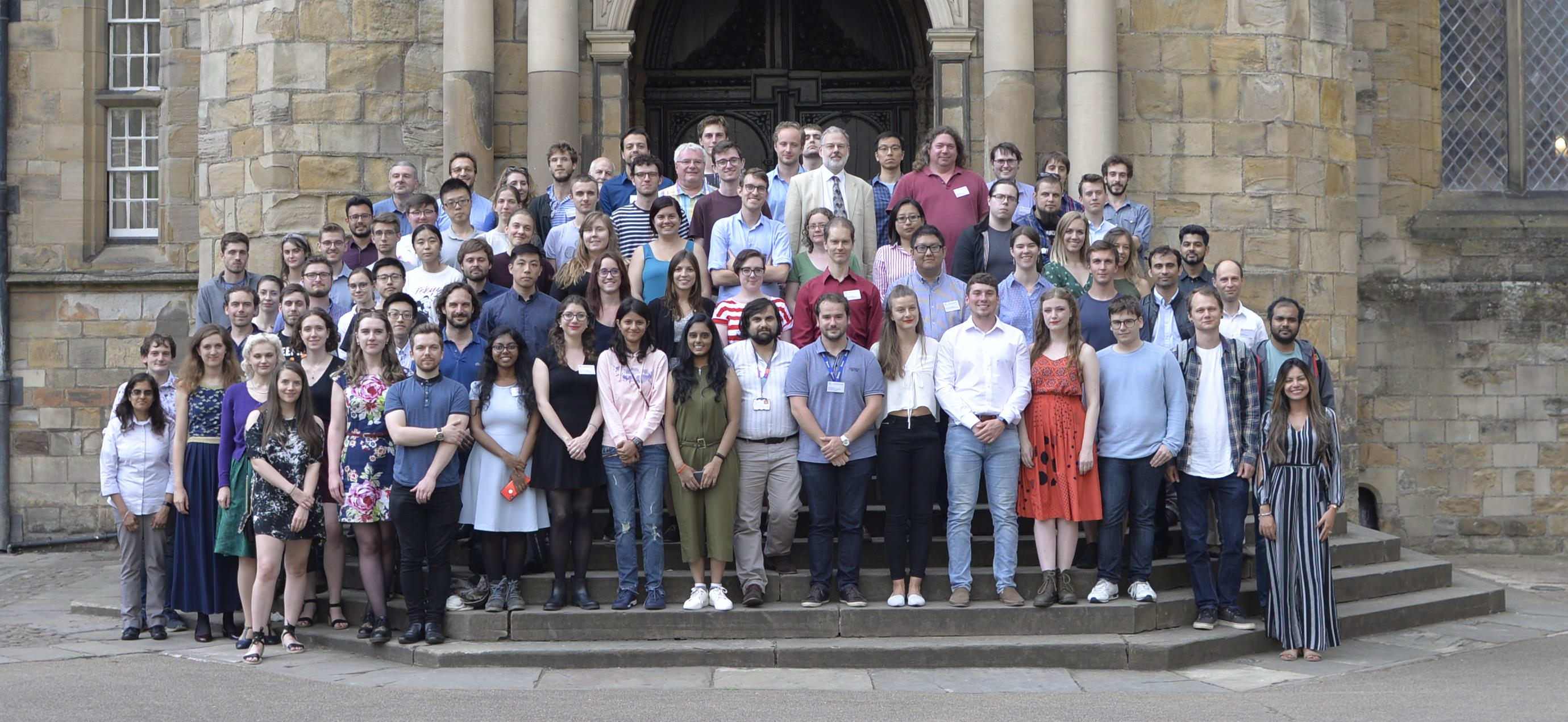
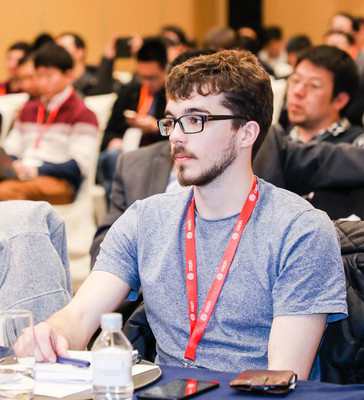
Tom Byrne (Data Services Group) spoke at the Cephalocon conference in Barcelona about the challenges of managing a rapidly growing Ceph cluster. You can view and listen to his talk via the conference YouTube link.
ePubs, the Open Archive for STFC publications celebrates its 15th year of service this summer. The service has now recorded more than 47,500 research outputs and is growing steadily each year. The records date back to the very origins of STFC, starting in 1957 and spanning right through to the current day. Over the past three years, an average of 2,280 records have been added annually by STFC staff.
For the 50th anniversary of the Moon Landings, SCD has been inspiring school pupils to learn basic programming skills by mapping a route to the Moon with the ever-popular Beebots, and testing slightly more advanced skills using Lego Mindstorms. Additionally there were tours of the impressive computational science 'machine room' where students were able to walk amongst tape robots and supercomputers.The activities were part of a package of educational activities held at the STFC Rutherford Appleton Laboratory in Oxfordshire to celebrate this immense achievement from half a Century ago, when technology was far less advanced than it is today .
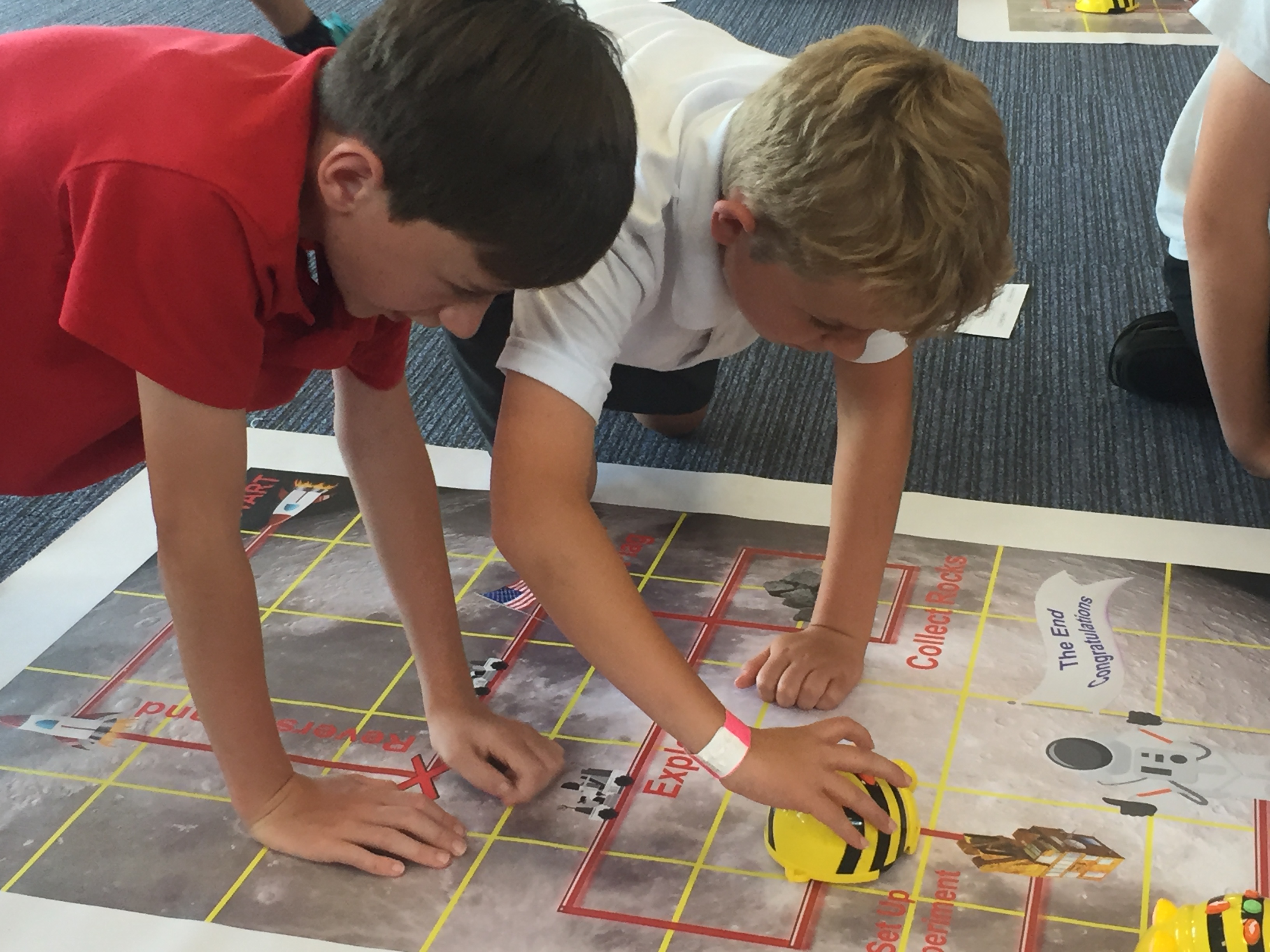
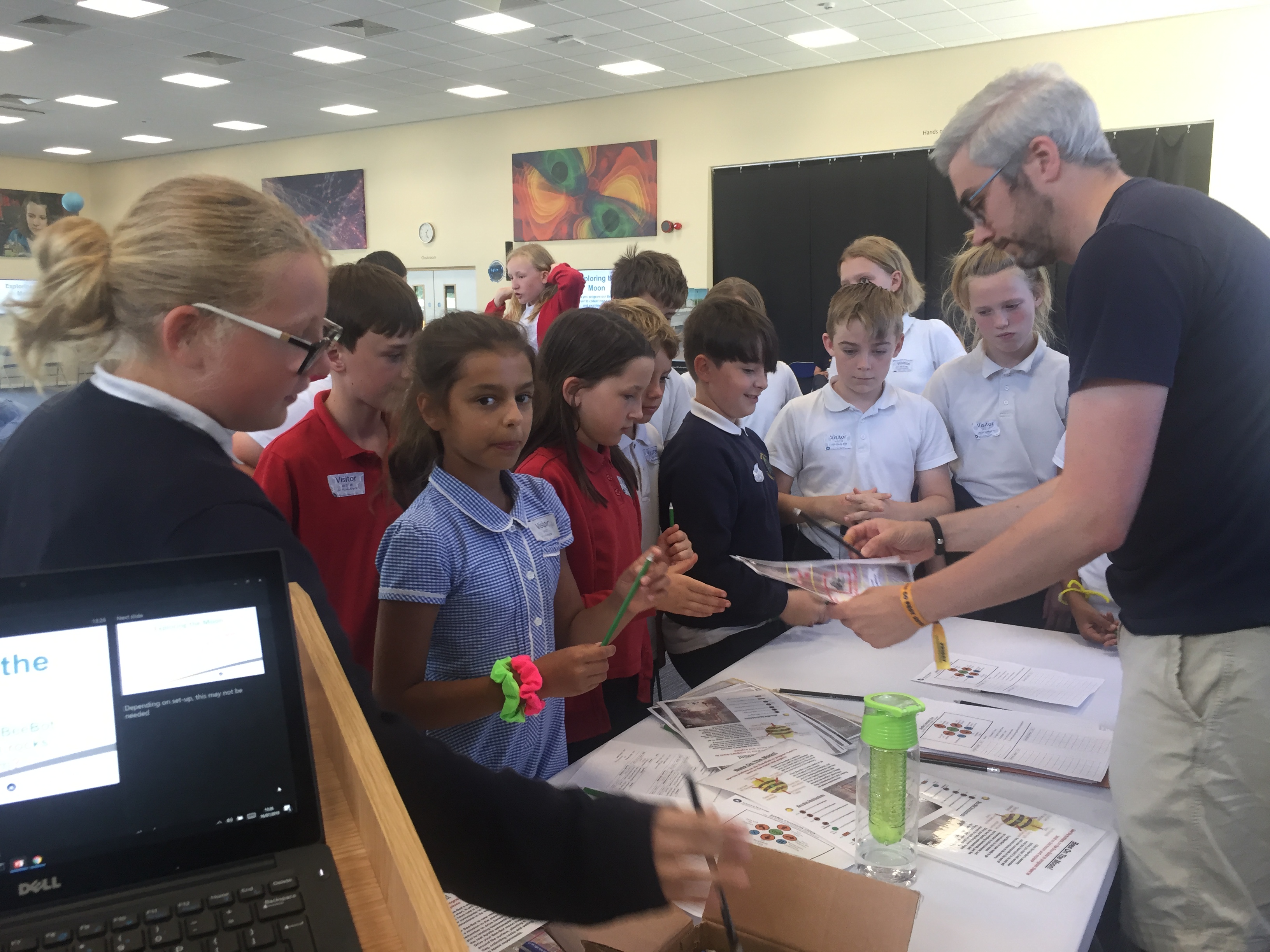
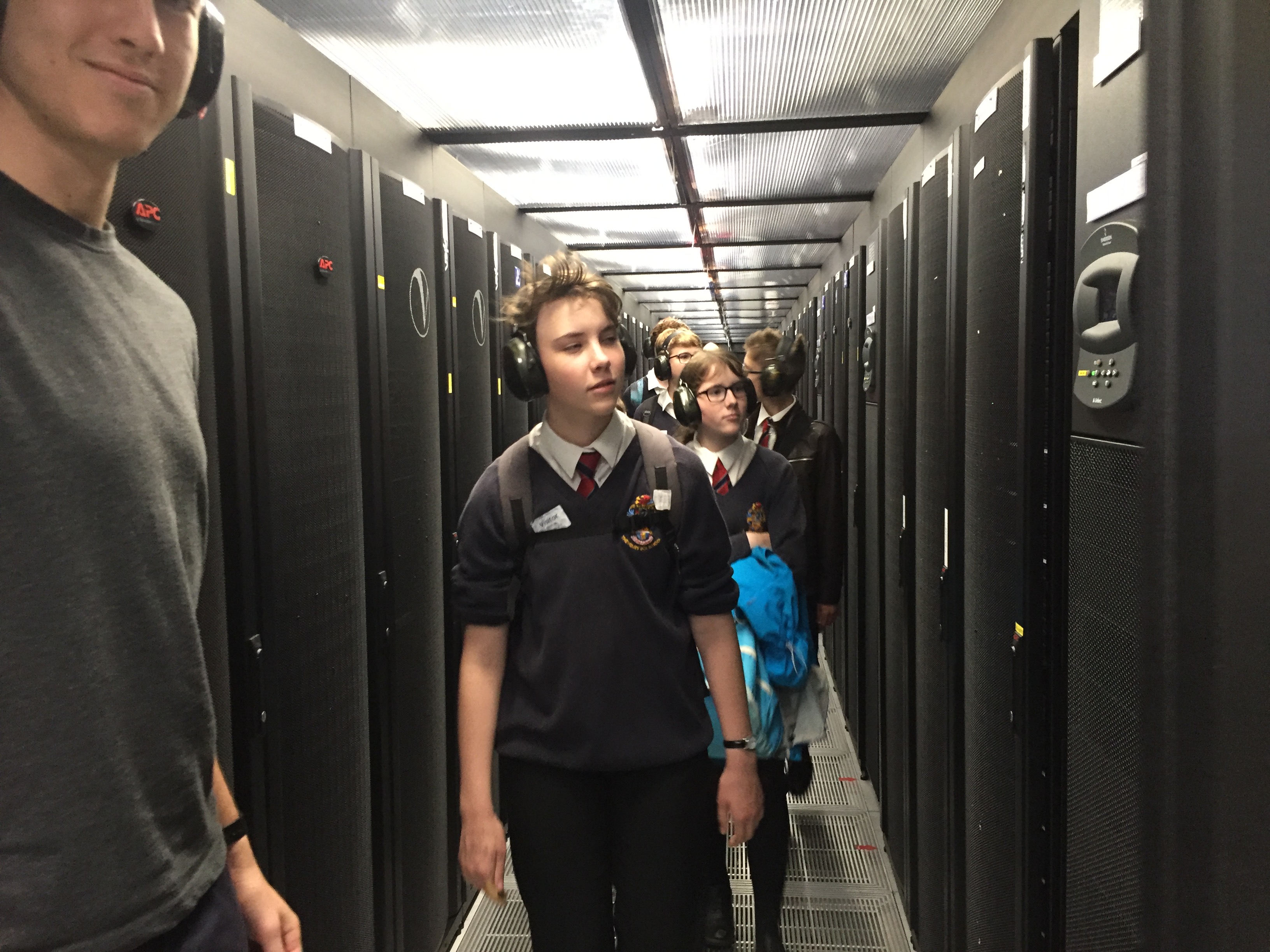
Meanwhile, SCD staff at the Daresbury Laboratory have been busy with outreach activities in the North of England. Students at St. Mary's C.E. School at West Derby, Liverpool, were treated to a session of meteorites and moon rocks, 3D printed gadgets and computer 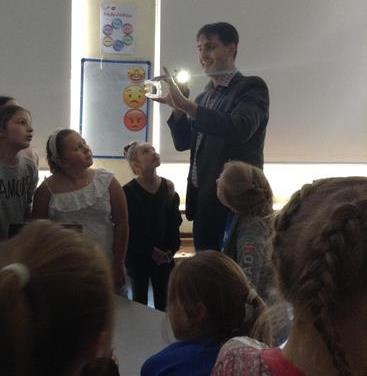 simulations with Computational Chemistry Group Leader, Ilian Todorov. The students were thrilled by simulation videos and a demonstration of how torchlight could shine through a semi-transparent slice of meteorite. They were “really excited to find out about the wide range of scientific research and technology instrumentation we carry out at our facilities," he said. Further north, his colleague Andrey Brukhno was setting out his stall at an Arts and Science Community Festival in Leeds. Aimed at families and students from supplementary education centres, which provide support for children from ethnic minorities who attend mainstream schools,the event helps students to
simulations with Computational Chemistry Group Leader, Ilian Todorov. The students were thrilled by simulation videos and a demonstration of how torchlight could shine through a semi-transparent slice of meteorite. They were “really excited to find out about the wide range of scientific research and technology instrumentation we carry out at our facilities," he said. Further north, his colleague Andrey Brukhno was setting out his stall at an Arts and Science Community Festival in Leeds. Aimed at families and students from supplementary education centres, which provide support for children from ethnic minorities who attend mainstream schools,the event helps students to
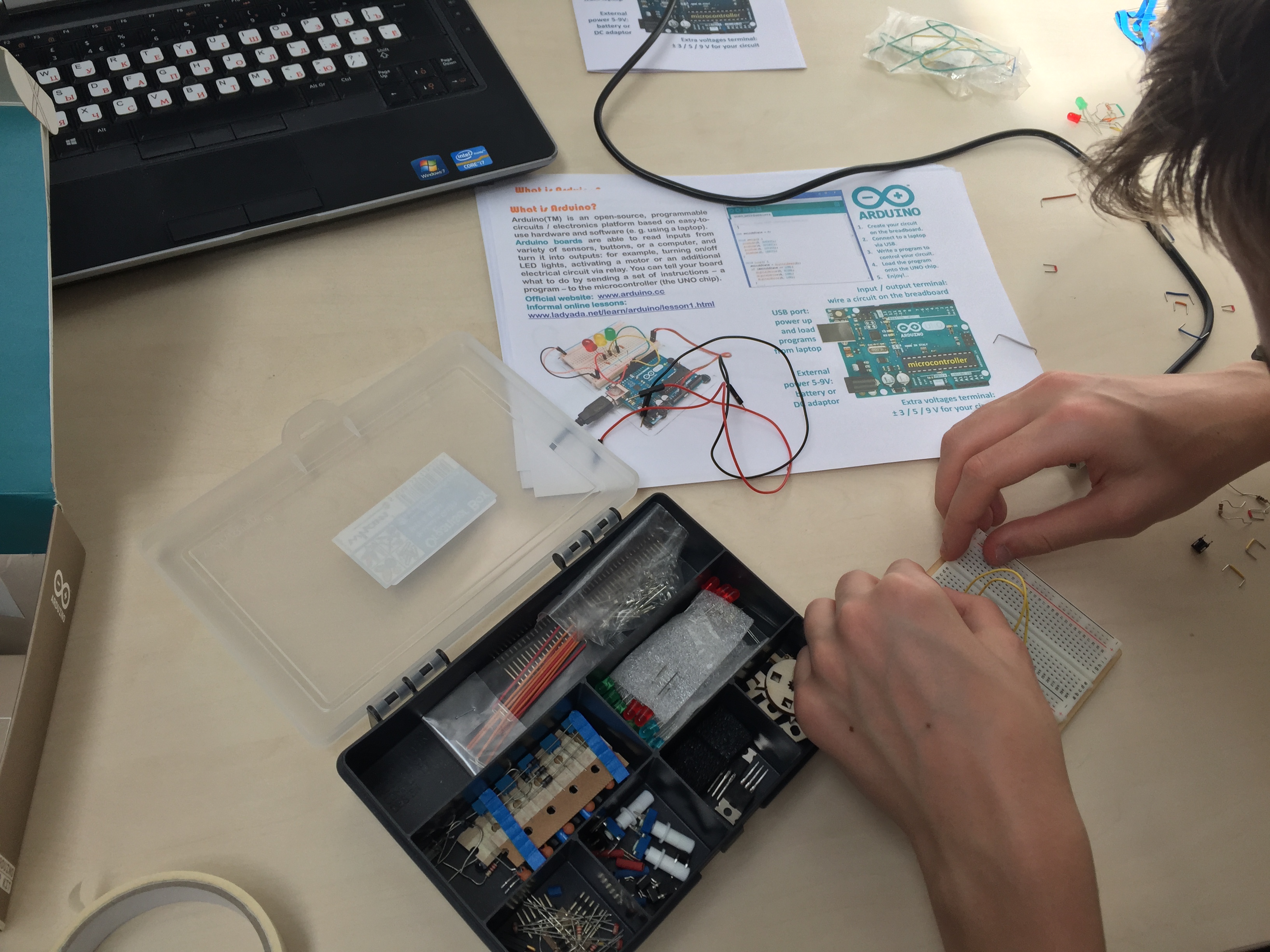 understand subjects in a creative and fun way. Aided by his son, Andrey showcased arduinos - a method of building electronics using a programmable circuit board. This activity was almost as popular as the STFC Public Engagement team's 'Inflatable Planetarium', which left students awed by the size of the sun and wanting to know more about the planet they live on.
understand subjects in a creative and fun way. Aided by his son, Andrey showcased arduinos - a method of building electronics using a programmable circuit board. This activity was almost as popular as the STFC Public Engagement team's 'Inflatable Planetarium', which left students awed by the size of the sun and wanting to know more about the planet they live on.
The workforce at Daresbury Lab grew over two weeks in July with the addition of work experience students who were following programs of activities led by three departments across the site (Technology, SCD and ASTeC). All of the students toured the HPC facilities, explored the structure of haemoglobin using virtual reality, learnt about computational fluid dynamics, and had a chat with a group of scientists in a 'meet-the-scientists' panel session.
